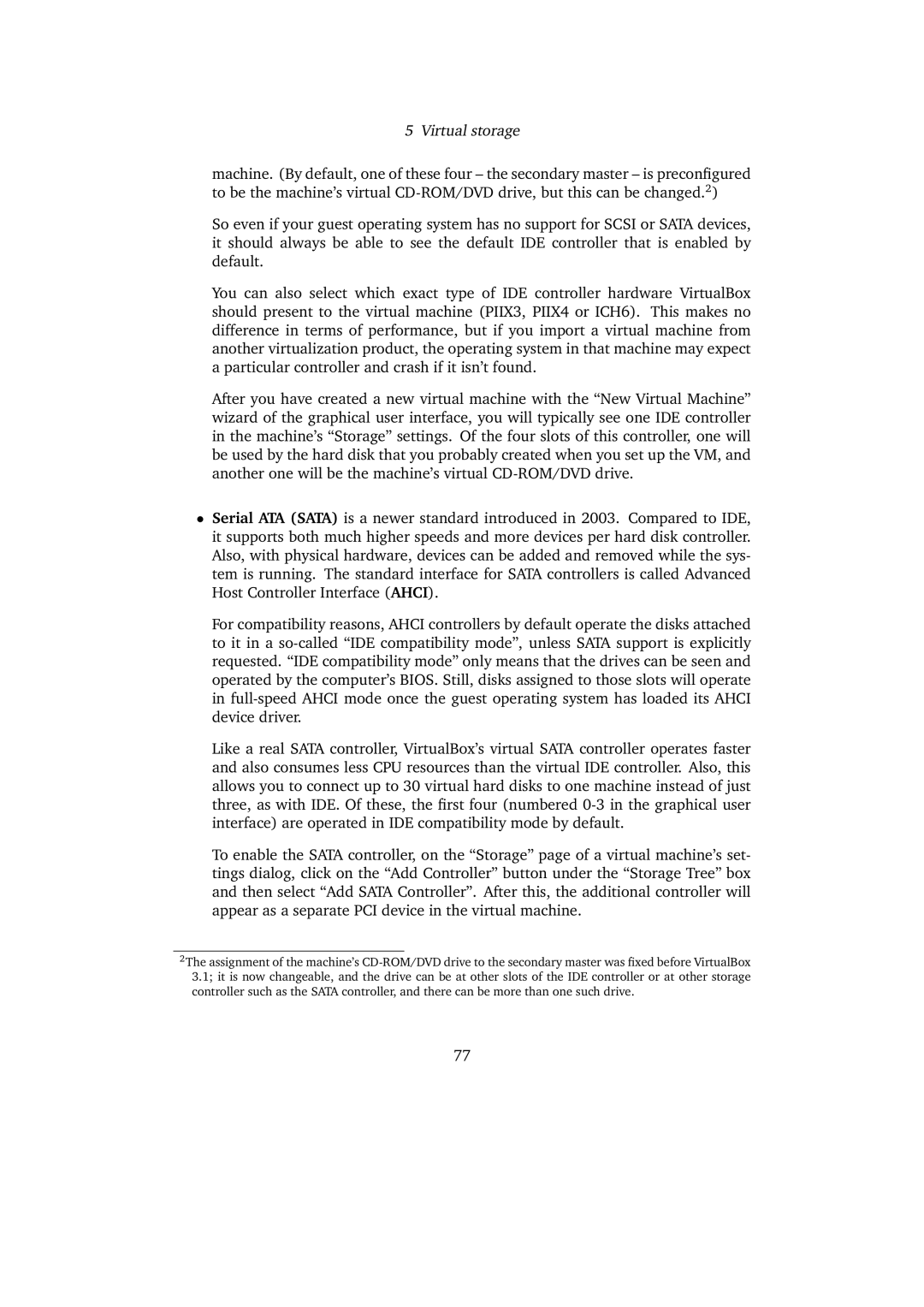5 Virtual storage
machine. (By default, one of these four – the secondary master – is preconfigured to be the machine’s virtual
So even if your guest operating system has no support for SCSI or SATA devices, it should always be able to see the default IDE controller that is enabled by default.
You can also select which exact type of IDE controller hardware VirtualBox should present to the virtual machine (PIIX3, PIIX4 or ICH6). This makes no difference in terms of performance, but if you import a virtual machine from another virtualization product, the operating system in that machine may expect a particular controller and crash if it isn’t found.
After you have created a new virtual machine with the “New Virtual Machine” wizard of the graphical user interface, you will typically see one IDE controller in the machine’s “Storage” settings. Of the four slots of this controller, one will be used by the hard disk that you probably created when you set up the VM, and another one will be the machine’s virtual
•Serial ATA (SATA) is a newer standard introduced in 2003. Compared to IDE, it supports both much higher speeds and more devices per hard disk controller. Also, with physical hardware, devices can be added and removed while the sys- tem is running. The standard interface for SATA controllers is called Advanced Host Controller Interface (AHCI).
For compatibility reasons, AHCI controllers by default operate the disks attached to it in a
Like a real SATA controller, VirtualBox’s virtual SATA controller operates faster and also consumes less CPU resources than the virtual IDE controller. Also, this allows you to connect up to 30 virtual hard disks to one machine instead of just three, as with IDE. Of these, the first four (numbered
To enable the SATA controller, on the “Storage” page of a virtual machine’s set- tings dialog, click on the “Add Controller” button under the “Storage Tree” box and then select “Add SATA Controller”. After this, the additional controller will appear as a separate PCI device in the virtual machine.
2The assignment of the machine’s
77
